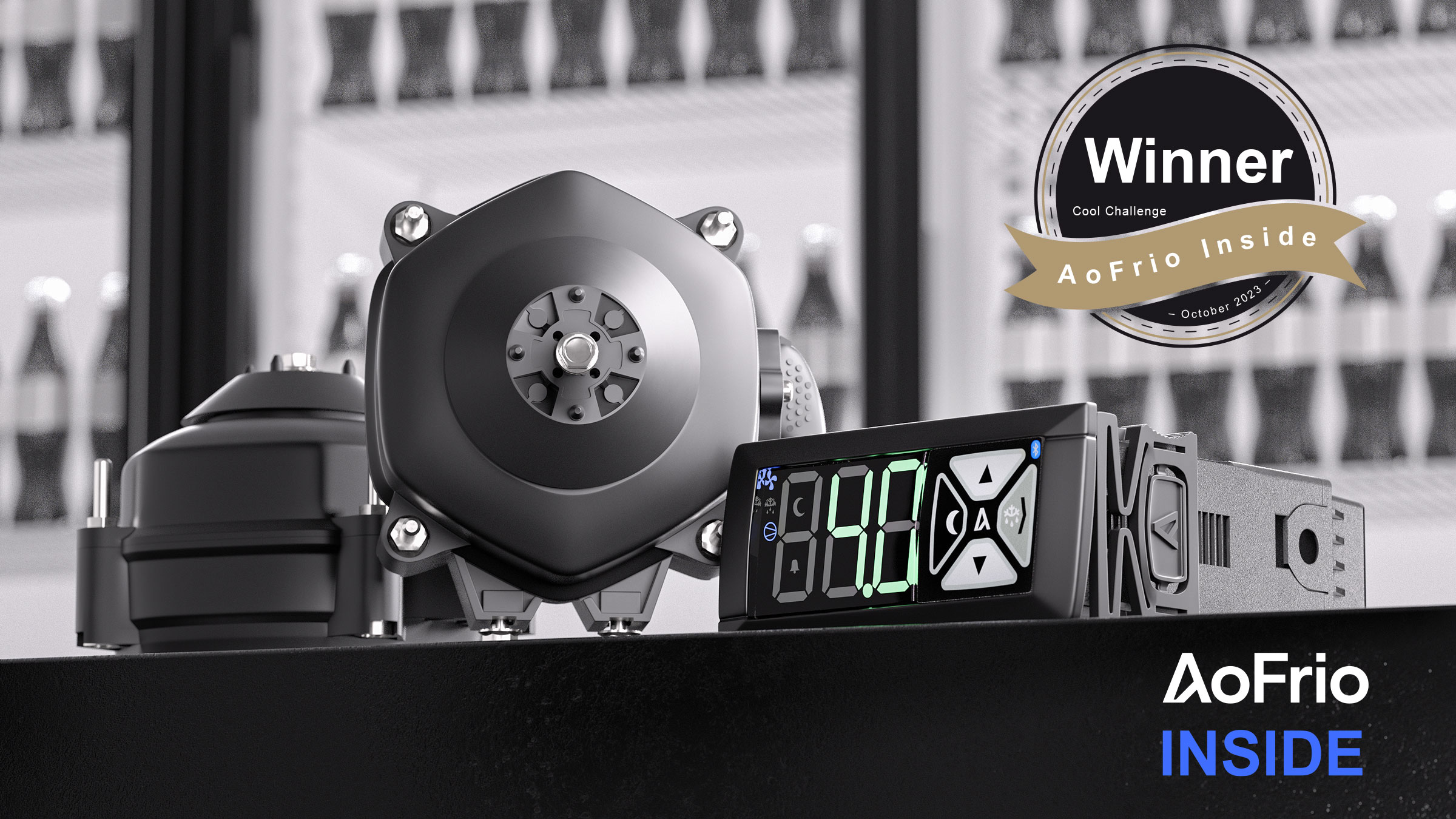AoFrio has earned EcoVadis' bronze medal, showcasing our commitment to sustainability. This places us among the top 35% of rated companies, reflecting our efforts across environmental, social, and ethical aspects.
AoFrio
Recent Posts
AoFrio wins EcoVadis Bronze medal
Apr 24, 2024 11:09:04 AM / by AoFrio posted in Energy efficiency, IoT Solutions, Connect Field, Connect IoT Solutions
Charting new horizons: Rodrigo Silva's story of passion and dedication at AoFrio
Feb 8, 2024 9:26:42 AM / by AoFrio posted in Energy efficiency, IoT Solutions, Connect Field, Connect IoT Solutions
Rodrigo Silva, based in Brazil, serves as a data analyst at AoFrio while completing his degree in Computer Science at the University of the State of Santa Catarina. With a scholarship, Rodrigo demonstrated a keen interest in data analysis, dedicating his efforts to Flutter development projects.
Trazando nuevos horizontes: la historia de pasión y dedicación de Rodrigo Silva en AoFrio
Feb 8, 2024 9:26:39 AM / by AoFrio posted in Energy efficiency, IoT Solutions, Connect Field, Connect IoT Solutions
Rodrigo Silva, residente de Brasil, desempeña el rol de analista de datos en AoFrio mientras completa su licenciatura en Ciencias de la Computación en la Universidad del Estado de Santa Catarina. Rodrigo, quien ha demostrado un gran interés en el análisis de datos, dedicó esfuerzos a proyectos de desarrollo de Flutter como becario, lo cual fortaleció su habilidad en programación y le ha permitido aplicar conceptos prácticos a proyectos del mundo real.
Traçando novos horizontes: a história de paixão e dedicação de Rodrigo Silva na AoFrio
Feb 8, 2024 9:26:36 AM / by AoFrio posted in Energy efficiency, IoT Solutions, Connect Field, Connect IoT Solutions
Rodrigo Silva, radicado no Brasil, atua como analista de dados na AoFrio enquanto conclui sua graduação em Ciência da Computação na Universidade do Estado de Santa Catarina. Bolsista, Rodrigo demonstrou grande interesse em análise de dados, dedicando seus esforços a projetos de desenvolvimento de Flutter.
Descubra a jornada inspiradora de Koko Ono: Nossa Talentosa Desenvolvedora Júnior de Aplicativos na AoFrio
Dec 11, 2023 3:27:11 PM / by AoFrio posted in Energy efficiency, IoT Solutions, Connect Field, Connect IoT Solutions
Vamos mergulhar na incrível história de Koko Ono, uma adição notável à nossa família AoFrio. Koko, originária do Japão, nos arredores da vibrante cidade de Tóquio, chamou a bela terra de Aotearoa de seu lar nos últimos 18 anos. Sua jornada, no entanto, é nada menos que extraordinária.
Explora el fascinante recorrido de Koko Ono: la talentosa desarrolladora de aplicaciones junior de AoFrio
Dec 11, 2023 3:17:55 PM / by AoFrio posted in Energy efficiency, IoT Solutions, Connect Field, Connect IoT Solutions
Sumérgete en la increíble historia de Koko Ono, parte de la familia AoFrio. Koko es originaria de Japón, y durante los últimos 18 años ha llamado hogar a la hermosa tierra de Aotearoa.
Jorge Civeira, Vice Presidente Comercial da América do Norte fala sobre relocação e promoção dentro da Aofrio
Dec 11, 2023 2:58:00 PM / by AoFrio posted in Energy efficiency, IoT Solutions, Connect Field, Connect IoT Solutions
Jorge Civeira fala sobre remanejamento e promoções dentro da AoFrio.
Jorge Civeira, Vicepresidente Comercial para NorteAmérica, nos comparte su experiencia sobre la reubicación y el ascenso dentro de AoFrio.
Dec 11, 2023 12:14:53 PM / by AoFrio posted in Energy efficiency, IoT Solutions, Connect Field, Connect IoT Solutions
En el actual y competitivo mercado laboral, alcanzar el éxito profesional va más allá del talento y la dedicación; exige también adaptabilidad y resiliencia. La historia de Jorge es un ejemplo de cómo estas cualidades son fundamentales para triunfar en este dinámico entorno.
Reduza o consumo de energia em sua frota de refrigeradores de garrafas em mais de 50%
Dec 6, 2023 5:24:25 PM / by AoFrio posted in Energy efficiency, IoT Solutions, Connect Field, Connect IoT Solutions
Neste artigo, mostraremos como as soluções inovadoras de economia de energia da AoFrio, conhecidas coletivamente como AoFrio Inside, podem ajudá-lo a reduzir o uso de energia em sua frota de refrigeradores de garrafas e melhorar seu impacto ambiental.
Reduzca el consumo de energía en su flota de enfriadores de botellas en más del 50%
Dec 6, 2023 3:12:08 PM / by AoFrio posted in Energy efficiency, IoT Solutions, Connect Field, Connect IoT Solutions
En este artículo, le mostraremos cómo las soluciones innovadoras de ahorro de energía de AoFrio, conocidas como AoFrio Inside, pueden ayudarle a reducir el uso de energía en su flota de enfriadores de botellas y mejorar su impacto en el medio ambiente.
If you would like some more information, or to speak with one of our team, please click here.
® is a registered Trade Mark of Wellington Drive Technologies Ltd
2020 Wellington Drive Technologies Limited
Wellington Offices
New Zealand (Head Office), Turkey, Mexico, US, Brazil, Italy, China, Singapore
E: info@wdtl.com www.wdtl.com




